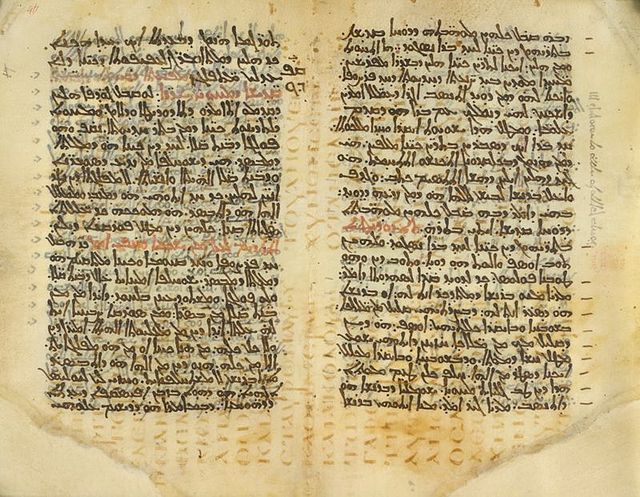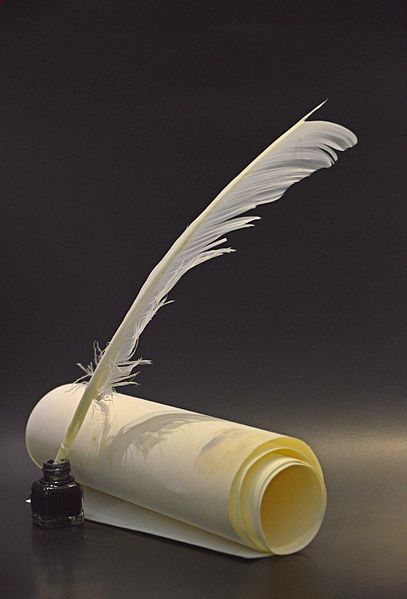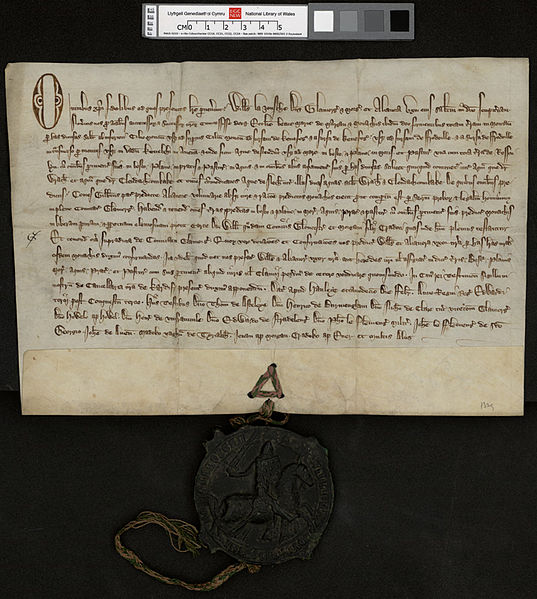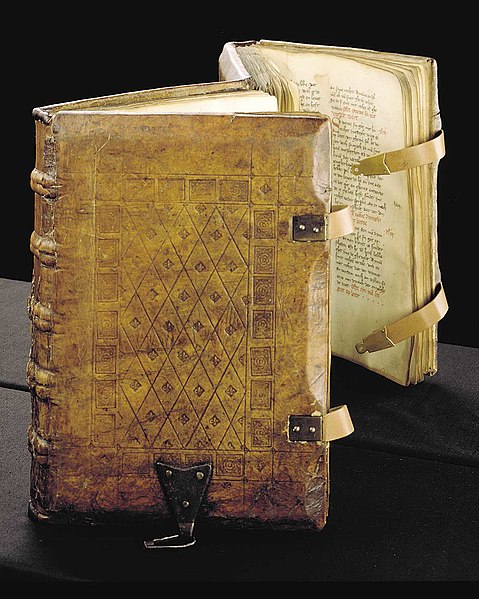In textual studies, a palimpsest is a manuscript page, either from a scroll or a book, from which the text has been scraped or washed off in preparation for reuse in the form of another document. Parchment was made of lamb, calf, or kid skin and was expensive and not readily available, so, in the interest of economy, a page was often re-used by scraping off the previous writing. In colloquial usage, the term palimpsest is also used in architecture, archaeology and geomorphology to denote an object made or worked upon for one purpose and later reused for another; for example, a monumental brass the reverse blank side of which has been re-engraved.
The Codex Ephraemi Rescriptus, a Greek manuscript of the Bible from the 5th century, is a palimpsest.
A Georgian palimpsest from the 5th or 6th century
Codex Nitriensis, with Greek text of Luke 9:22–33 (lower text)
Codex Nitriensis, with Syriac text (upper text)
Parchment is a writing material made from specially prepared untanned skins of animals—primarily sheep, calves, and goats. It has been used as a writing medium for over two millennia. Vellum is a finer quality parchment made from the skins of young animals such as lambs and young calves.
Central European (Northern) type of finished parchment made of goatskin stretched on a wooden frame
Parchment with a quill and ink
Latin grant dated 1329, written on fine parchment or vellum, with seal
A 1385 copy of the Sachsenspiegel, a German legal code, written on parchment with straps and clasps on the binding








